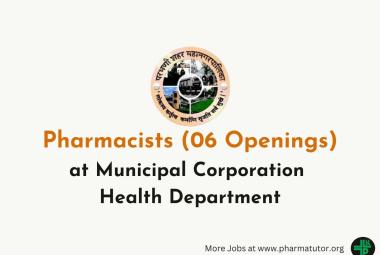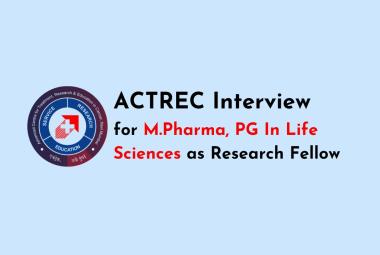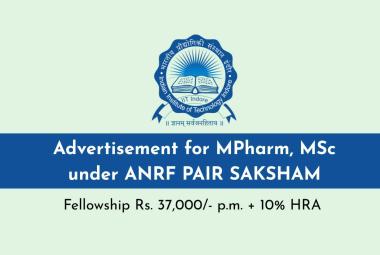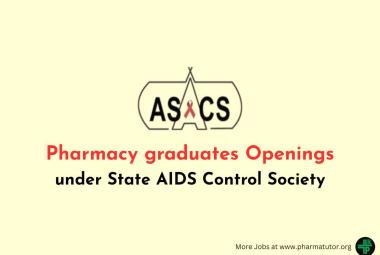 ABOUT AUTHORS:
ABOUT AUTHORS:
Manish Goswami, U.K.Singh, Rajat Kumar
Kharvel subharti college of pharmacy (swami Vivekanandsubharti University) Subhartipuram,
N.H-58, Meerut By Pass Road,
Meerut, uttarpradesh- 250001, India.
*manish.revosys88@gmail.com
ABSTRACT:
The desire of improved palatability in orally administered products has prompted thedevelopment of numerous formulations with improved performance and acceptability. Mouth dissolving tablets (MDTs) have received ever-increasing demand during the last fewdecades, and the field has become a rapidly growing area in the pharmaceutical industry. Theunique property of mouth dissolving tablet is that they are rapidly disintegrating and/ordissolving and release the drug as soon as they come in contact with saliva, thus obviate therequirement of water during administration. this review also provides the detailed concept of some unique patents; technologiesdeveloped and marketed formulations of Mouth Dissolving Tablets(MDTs).The present investigation was undertaken with a view to develop mouth-dissolving tablets which offer a new range of product having desired characteristics and intended benefits. Mouth dissolving tablets are advantageous particularly for pediatric, geriatric and mentally ill patients who have difficulty in swallowing conventional tablets and capsules. The basic approach used in development of MDT is the use of super disintegrants like Crosslinked carboxymethyl cellulose (Croscarmellose), Sodium starch glycolate (Primogel, Explotab). Polyvinylpyrrolidone (Polyplasdone) etc. whichprovide instantaneous disintegration of tablet after putting on tongue, thereby releasing the drug in saliva.
[adsense:336x280:8701650588]
REFERENCE ID: PHARMATUTOR-ART-1741
INTRODUCTION:
Many pharmaceutical dosages are administered in the form of pills, granules, powders, and liquids. Generally, a pill is designed for swallowing intact or chewing to deliver a precise dosage of medication to patients. The pills, which include tablets and capsules, are able to retain their shapes under moderate pressure. However, some patients, particularly pediatric and geriatric patients, have difficulty in swallowing or chewing solid dosage forms. Many pediatric and geriatric patients are unwilling to take these solid preparations due to a fear of choking. In order to assist these patients, several mouth dissolving drug delivery systems have been developed. Mouth dissolving tablets can be prepared by various conventional methods like direct compression, wet granulation, moulding, spray drying, freeze drying and sublimation. MDTs disintegrate and/or dissolve rapidly in the saliva without the need for water, releasing the drug. Some drugs are absorbed from the mouth, pharynx and esophagus as the saliva passes down into the stomach. In such cases, bioavailability of drug is significantly greater than those observed from conventional tablet dosage form. There is an important role of drinking water in the swallowing of oraldosage forms but some time peopleexperiences an inconvenience in swallowing. The problemscan be resolved by means of Mouth Dissolving Tablets (MDTs), when water is not available asduring journey, also in case of the motion sickness (kinetics) and sudden episodes of coughing during the common cold, allergic condition and bronchitis. MDTs are also abbreviated as “fast melting, fast-dissolving, oral disintegrating or ordisperse tablets”. The major advantage of the MDT formulation is that it combines the advantages of both liquid and conventional tablet formulations. Recently European Pharmacopoeia defines the term “Mouth dissolving tablet” as a tablet that to be placed in the mouth where it disperses rapidly before swallowing in less than three minutes.
DESIRED CRITERIA FOR MOUTH DISSOLVING TABLET
Mouth Dissolving Tablet should-
· Not require water to swallow, but it should dissolve or disintegrate in the mouth within matter of s.
· Be compatible with taste masking
· Be portable without fragility concern.
· Have a pleasing mouth feel.
SALIENT FEATURES OF FAST DISSOLVING TABLET
· Ease of administration to patients who refuse to swallow a tablet, such as pediatric and geriatric
· Patients and psychiatric patients.
· Convenience of administration and accurate dosing as compared to liquids.
· No need of water to swallow the dosage from, which is highly convenient feature for patients
· Who are traveling and do not have immediate access to water.
· Good mouth feel property helps to change the basic view of medication as “bitter pill”,
· Particularly for pediatric patients.
· Rapid dissolution and absorption of drug, which may produce rapid onset of action.
[adsense:468x15:2204050025]
Newer manufacturing technologies used now a day for MDT’s.
Some of the new advanced technologies which are commonly being used in last few decades aresummarized as:-
· Freeze drying/Lyophilization
· Molding
· Direct Compression
· Cotton Candy Process
· Spray Drying
· Sublimation
· Mass Extrusion
· Nanonization
· Fast Dissolving Films
Freeze drying or lyoplilization: - It is one of the first generation techniques for preparing MDT, in which sublimation of water takes place from the product after freezing. The formulations show enhanced dissolution characteristics due to the appearance of glossy amorphous structure to bulking agents and sometimes to drug. The ideal drug characteristics for this process are relative water insolubility with fine particle size and good aqueous stability in suspensions. Primary problems associated with water-soluble drugs are formation of eutectic mixture, because of freezing point depression and formation of glassy solid on freezing, which might collapse on sublimation. The addition of mannitol or crystal forming materials induces crystallinity and imparts rigidity to amorphous material. The advantage of using freeze-drying process is that pharmaceutical substances can be processed at non elevated temperature, thereby eliminating adverse thermal effects. High cost of equipment and processing limits the use of this process. Other disadvantages include lack of resistance necessary for standard blister packs of the final dosage forms.
Tablet Molding: - There are two types of molding process i.e. solvent method and heat method. Solvent method involves moistening the powder blend with a hydro-alcoholic solvent followed by compression at low pressures in molded plates to form a wetted mass (compression molding). Air-drying is done to remove the solvent. The tablets manufactured so formed are less compact than compressed tablets and posses a porous structure that hastens dissolution. In the heat molding process a suspension is prepared that contains a drug, agar and sugar (e.g. mannitol or lactose). This suspension is poured in the blister packaging wells, and then agar is solidified at the room temperature to form a jelly and dried at 30?C under vacuum. The main concern about these molded tablets is their mechanical strength, which can be achieved by using binding agents. The spray congealing of a molten mixture of hydrogenated cottonseed oil, sodium carbonate, lecithin, polyethylene glycol and an active ingredient into a lactose based tablet triturate form was used to prepare the taste masked drug particles. As compared to the lyophillization technique, tablets produced by the molding technique are easier to scale up for industrial scale manufacturing.
Direct Compression: -Direct compression represents the simplest and most cost effective tablet manufacturing technique. MDT can be prepared by using this technique becauseof the availability of improved recipients especially super-disintegrants and sugar basedexcipients.
(a) Super-disintegrants:-The rate of disintegration gets affected by the addition of superdisintegrantsand hence the dissolution. Other ingredients like water-soluble excipients andeffervescent agents also increase the disintegration.
(b) Sugar based excipients: - The sugar based excipients which are commonly used areespecially bulking agents (like dextrose, fructose, lactilol, maltilol, maltose, mannitol, sorbitol,starch hydrolysate, polydextrose and xylitol) which display high aqueous solubility andsweetness, and hence impart taste masking property and provide pleasing mouth feel. Mizumitoet al classified sugar-based excipients into two types on the basis of molding and dissolution rate:Type 1 saccharine (lactose and mannitol) exhibit low mould ability but high dissolution rate.Type 2 saccharine (maltose and maltilol) exhibit high mould ability but low dissolution rate.
NOW YOU CAN ALSO PUBLISH YOUR ARTICLE ONLINE.
SUBMIT YOUR ARTICLE/PROJECT AT articles@pharmatutor.org
Subscribe to Pharmatutor Alerts by Email
FIND OUT MORE ARTICLES AT OUR DATABASE
Cotton Candy Process:-
The FLASHDOSE® is a MDDDS manufactured usingShear form™ technology in association with Ceform TI™ technology to eliminate the bitter tasteof themedicament [46, 47]. A matrix known as ‘floss’, with a combination of excipients, eitheralone or with drugs is prepared by using shear form technology. Like cotton-candy fibers floss isfibrous material made of saccharine such as sucrose, dextrose, lactose and fructose attemperatures ranging between 180–266 °F. However, other polysaccharides such as polymaltodextrinsand poly-dextrose can be transformed into fibers at 30–40% lower temperature than sucrose. Due to this modification thermo labile drugs can be safely incorporated into theformulation. This process results in a highly porous product and offer very pleasant mouthfeel due to fast solubilization of sugars in presence of saliva. The manufacturing process can bedivided into four steps as detailed below:
(a)Floss blend: - The floss mix is prepared by blending the 80% sucrose in combination withmannitol/dextrose and 1% surfactant. The surfactant maintains the structural integrity of the flossfibers by acting as crystallization enhancer. This process helps in retaining the dispersed drug inthe matrix, thereby minimizes the migration out of the mixture.
(b) Floss processing: - The floss formation machine uses flash heat and flash flow processes toproduce matrix from the carrier material. The machine is similar to that used in ‘cotton-candy’formation which consists of a spinning head and heating elements. In the flash heat process, theheat induces an internal flow condition of the carrier material. This is followed by its exitthrough the spinning head (2000–3600 rpm) that flings the floss under centrifugal force anddraws into long and thin floss fibers, which are usually amorphous in nature.
(c) Floss chopping and conditioning: - In this step fibers are converted into smaller particles ina high shear mixer granulator. The partial crystallization is done by spraying ethanol (1%) ontothe floss and subsequently evaporated it to impart improved flow and cohesive properties to thefloss. This is called Conditioning.
(d) Blending and compression: - Finally, the chopped and conditioned floss fibers are blendedwith the drug and other excipients and compressed into tablets. Exposure of the dosage forms toelevated temperature and humidity conditions (40 °C and 85% RH for 15min) improves themechanical strength of tablets due to expected crystallization of floss material that result inbinding and bridging, to improve the structural strength of the dosage form.
Sprays-Drying: - Allen et al., [54] have used spray-drying for the production of MDTs. Theformulations contained hydrolyzed and non hydrolyzed gelatin as a supporting agent for thematrix, mannitol as a bulking agent and sodium starch glycolate or croscarmellose as adisintegrant. By adding an acid (e.g., citric acid) or an alkali (e.g., sodium bicarbonate)disintegration and dissolution were further enhanced [55]. The porous powder was obtained byspray drying the above suspension which was compressed into tablets. Tablets manufactured bythis method shows disintegration time < 20 sec in an aqueous medium.
Sublimation: - To produce MDTs with high porosity, sublimation is the technique which hasbeen used successfully. When volatile ingredients are compressed along with other excipients intotablets, a porous matrix is formed which are finally subjected to a process of sublimation. For this purpose inert solid ingredients with high volatility (e.g., ammonium bicarbonate, ammoniumcarbonate, benzoic acid, camphor, hexamethylene tetramine, naphthalene, urea and urethane) have been used. Solvents such as cyclohexane and benzene were also suggested forgenerating the porosity in the matrix. Makino et al., reported a method using water as apore-forming material.
Mass-Extrusion: - This technology involves softening of the active blend using the solventmixture of water soluble polyethylene glycol and methanol. This softened mass is extrudedthrough the extruder or syringe and a cylindrical shaped extrude is obtained which are finally cutinto even segments using heated blade to form tablets. Granules of bitter drugs can be coatedusing this method to mask their taste.
Nanonization: - A recently developed Nanomelt technology involves reduction in theparticle size of drug to nano size by wet-milling technique [58]. Surface adsorption of the nano crystals of the drug is done on selected stabilizers for stabilizing them against agglomeration,which are then incorporated into MDTs. This technique is mainly advantageous for poor watersoluble drugs and also for a wide range of doses (up to 200 mg of drug per unit).
Fast Dissolving Films: - It is a newer developing front in MDDDS that provides a veryconvenient means of taking medications and supplements. In this technique, water soluble filmforming polymer (pullulan, CMC, HPMC, HEC, HPC, PVP, PVA etc.), drug and other tastemasking ingredients are dissolved in non-aqueous solvent to prepare non-aqueous solution, which on evaporation of solvent forms a film. Resin adsorbate or coated micro particles of thedrug can be incorporated into the film if the drug is bitter [59]. This film when placed in mouth melts or dissolves rapidly and releases the drug in solution or suspension form. This system formsthe thin films of size less than 2 X 2 inches which dissolves within 5 sec with instant drug delivery and flavored.
EALUATION OF FAST DISSOLVING TABLET.
Weight variation
The weight variation test is carried out in order to ensure uniformity in the weight of tablets in a batch. The total weight of 20 tablets from each formulation was determined and the average was calculated. The individual weights of the tablets were also determined accurately and the weight variation was calculated.
Hardness
The hardness of tablet is an indication of its strength. Measuring the force required to break the tablet across tests it. The force is measured in kg and the hardness of about 3-5 kg/cm2 is considered to besatisfactory for uncoated tablets. Hardness of 10 tablets from each formulation was determined byMonsanto hardness tester.
Friability test
Friability is the loss of weight of tablet in the container due to removal of fine particles from thesurface. Friability test is carried out to access the ability of the tablet to withstand abrasion inpackaging, handling and transport. Roche friabilator was employed for finding the friability of thetablets. 20 tablets from each formulation were weighed and placed in Roche friabilator that rotated at 25 rpm for 4 minutes. The tablets were deducted and weighed again. The percentage of weight loss wascalculated again. The percentage of weight loss was calculated using the formula
% Friability = [(W1-W2)100]/W1
Where,
W1= Weight of tablet before test, W2 = Weight of tablet after test
Disintegration test
The USP device to rest disintegration was six glass tubes that are “3 long, open at the top, and heldagainst 10” screen at the bottom end of the basket rack assembly. One tablet is placed in each tube andthe basket rack is poisoned in 1 liter beaker of distilled water at 37± 2 oC, such that the tablets remain below the surface of the liquid on their upward movement and descend not closer than 2.5cm from the bottom of the beaker.
Uniformity of dispersion
Two tablets were kept in 100ml water and gently stirred for 2 minutes. The dispersion was passedthrough 22 meshes. The tablets were considered to pass the test if no residue remained on the screen.
Wetting time
The wetting time of the tablets was measured using a simple procedure. Five circular tissue papers of10cm diameter were placed in a Petridis containing 0.2% w/v methylene blue solution (3ml). A tabletwas carefully placed on the surface of the tissue paper. The time required for develop blue color on theupper surface of the tablets was noted as the wetting time.
Water absorption ratio
A small piece of tissue paper folded twice was placed in a small petridish containing 6ml of water. Atablet was put on the paper and the time required for complete wetting was measured. The wetted tabletwas then reweighed. Water absorption ratio, R was determined by using following formula were givenR= 100 x Wa-Wb / WbWb is the weight of tablet before water absorptionWa is the weight of tablet after water absorption
Taste/ Mouth sensation
Mouth-feel is critical, and patients should receive a product that feels pleasant. One tablet from eachbatch was tested for the sensation by placing the tablet on the tongue. The healthy human volunteerswere used for evaluation of mouth feel. Volunteer’s opinion for the taste were rated by giving differentscore values
i.e. .0 = good, 1 = tasteless, 2 = slightly bitter, 3 = bitter, 4 = awful.
In vitro drug release studies.
The Gliclazide fast dissolving tablets were subjected to in vitro drug release studies in pH 6.8phosphate buffer for 30 minutes to access the ability of the formulation for providing immediate drugdelivery. Drug release studies were carried out in eight stage dissolution test apparatus (DISSO 2000,Lab India) using 900ml ml of dissolution medium (pH 6.8 phosphate buffer) maintained at 37±10C.The tablets were kept in the cylindrical basket and rotated at 100 rpm.
NOW YOU CAN ALSO PUBLISH YOUR ARTICLE ONLINE.
SUBMIT YOUR ARTICLE/PROJECT AT articles@pharmatutor.org
Subscribe to Pharmatutor Alerts by Email
FIND OUT MORE ARTICLES AT OUR DATABASE
Future Research Developments in MDTs: Although theMDT technologies has passed through a lot ofdevelopments, as shown by a large number of commercial products in the market, but there are still many characteristics features to improve the formulations. Despite progress in the MDT technologies, formulation of MDT of lipophilic drugs is still a challenge, particularly when the amount of drug is more. So there is need to develop a new MDT technology to overcome this problem additionally, the hope of using MDTs too lies in the improvement of taste-masking properties. The coating of bitter taste drugs are commonly used, but it increases the total bulk volume of the formulation. As there is no solution to this problem, but use of more effective taste masking technologies can avoid the problems. Generally in the MDT formulations there is requirement of more amounts of excipients, which results in making big formulation. Hence, there is need to develop a MDT formulations that would require fewer excipients than the drug itself.
CONCLUSIONS:
There are numerous drugs that have been marketed as MDT formulation. The key feature of a MDT formulation is fast disintegration, dissolution in the mouthin presence of saliva. This can be attained by formulating a porous structure of the tablet matrix or by addition ofeffervescent agents and/or superdisintegrants. MDTs formulated by direct compression method usually possessgood mechanical strength. This strength can be further improved by subsequent treatment, such as moisture treatment. MDTs provide a rapid onset of drug action, MDT need to be formulated forpediatric, geriatric, bedridden, psychotic patients, for those patients who are busy in traveling,has difficulty in swallowing and may not have access to water. MDT offers the combinedadvantages of ease of dosing and convenience of dosing in the absence of water or fluid. To fulfill the medical needs, formulators have devotedconsiderable efforts to developed a novel type of dosage form (tablet) for oral administration Therefore in coming era, there is going to be continued interestfor the development of natural polymers based orally disintegrating tablets. The future trends in innovations of drug delivery systems will continue to bring together different technological disciplines and formulation aspects to create novel technologies.
Commercially available mouth dissolving tablets.
|
Brand Name |
Active ingredient |
Company |
|
Dom ray MD |
Domeperidone |
Ray Remedies |
|
Zotacet MD |
Cetirizine HCL |
Zota pharma |
|
Olanex Instab |
Olanzepine |
Ranbaxy |
|
Torrox MT |
Rofecoxib |
Torrent |
|
Nexus MD |
Nimesulide |
lexus |
|
Mosid MT |
Mosapride |
Torrent |
|
Manza RDT |
Olanzepine |
Mano pharma |
REFERENCES:
1.Dobetti L. Fast Melting Tablet: Development and technologies, Pharm Tech. 2001;37:44-8.
2.Bradoo R, Shahani S, Poojary S, Deewan B, Sudarsan S. Fast dissolving drug delivery system. JAMA India.2001;4(10):27-31.
3.Habib W, Khankari R, Hontz J. Fast dissolving drug delivery system: Critical Review In Therapeutics. Drug Carrier Systems. 2000;17(1):61-72.
4.Lorenzp-Lamosa ML, Cuna M, Vila-Jato JL, Torres D. Fast dissolving drug delivery system: An Update. J Microencapsul.1997;14:607.
5.[updated 2010 April 28; cited 2010 may 7]. Available from: http://en.wikipedia.org/wiki/ ketorolac.
6.Borne R. NonsteroidalAnti inflammatory agents. In: David W, Thomas L, editors. Foye’s principles of medicinal chemistry. 5th ed. USA: Lippincott Williams & Wilkins; 2002. p. 774-5.
7.Roberts LJ, Morrow JD. Analgesic-antipyretic and anti-inflammatory agents and drug employed in the treatment of gout. In: Hardman J, Limbird L, editors. Goodman and Gilman’s The pharmacological basis of therapeutics. 10th ed. USA: McGraw-Hill; 2001. p. 709.
8.Sammour OA, Hammad MA, Megrab NA, Zidan AS. Formulation of mouth dissolve tablet containing rofecoxib solid dispersion. AAPS Pharm Sci Tech. 2006;7(2):E1-E9.
9.Malke S, Shidhaye S, Kadam VJ. Formulation and evaluation of oxcarbazepine fast dissolving tablet. Indian J Pharm Sci. 2007;69(2):211-4.
10.Patel DM, Patel MM. Optimization of fast dissolving etoricoxib tablet prepared by sublimation technique. Indian J Pharm Sci. 2008;70:71-6.
11.Shirsand SB, Sarasija S, Swamy PV, Nagendrakumar D, Ramure MV. Design and evaluation of fast dissolving tablet of clonazepam. Indian J Pharm Sci. 2008;70(6):791¬-5.
12.Swamy PV, Divate SP, Shirsand SB, Rajendra P. Preparation and evaluation of orodispersible tablet of pheniramine maleate by effervescent method. Indian J Pharm Sci. 2009;71(2):151-4.
13.Jain CP, Naruka PS. Formulation and evaluation of fast dissolving tablet of valsartan. Int J Pharmacy Pharm Sci. 2009;1(1):219-26.
14.Chopra VS, Sinnghi SK. Formulation and characterization of fast dissolving tablet of nimesulide. Int J Pharm. 2009;1(2):82-4.
15.Mahamuni SB, Shahi SR, Shinde NV, Ararawal GR. Formulation evaluation of fast dissolving tablet of promethazine hydrochloride with masked bitter taste. Int J Pharm Res Dev. 2009;7:1-18.
16.Shirsand SB, Sarasija S, Swamy PV. Formulation design and optimization of fast dissolving clonazepam tablets. Indian J Pharm Sci. 2009;71(5):567-72.
17.Yadav I, Jaiswal D, Singh HP, Dinesh C, Jain DA. Formulation evaluation and optimization of fast dissolving tablet containing nimesulidemicropellets. Int J Chem Tech Res. 2009;1(4):910-4.
18.Shirsand SB, Sarasija S, Swamy PV, Para MS, Nagendrakumar D. Formulation design of fast disintegrating tablets using disintegrant blends. Indian J Pharm Sci. 2010;72(1):130-3.
19.Prajapati BG, Patel PV. Formulation and optimization of domperidone fast dissolving tablet by wet granulation techniques using factorial design. Int J Pharm Tech Res. 2010;2(1):292-9.
20.Gudas GK, Manasa B, Rajesham VV, Kiran S, PrasannaKumari J. Formulation and evaluation of fast dissolving tablets of chlorpromazine HCl. J Pharm Sci Tech. 2010;2(1):99-102.
21.Deveswaran R, Bharath S, Sharon F, Basavaraj BV, Sindhu A, Madhavan V. Studies on the disintegrant properties of mucilage and seed powder of plantagoovata. Int J Chem Tech Res 2009;1(3):621-6.
22.Santanu C, Madhusmruti K, Satyaprakash S, Niranjan CP. Comparative study on effect of natural and synthetic superdisintegrants in the formulation of fast dissolving tablets. Int J of Green Pharm 2008;2(1):22-5.
23.Siraj S, Khirsagar RV, Aamer Q. Fast disintegrating tablets: An overview of formulation and technology. Int J Pharmacy Pharm Sci 2010;2(3):09-15.
24.Jain CP, Naruka PS. Formulation and evaluation of fast dissolving tablets of Valsatran. Int J Pharmacy Pharm Sci 2009;1(1):219-26.
25.Shirsand SB, Sarasija S, Swamy PV, Para MS, Nagendra KD. Formulation design of fast disintegrating tablets using disintegrant blends. Indian J Pharm Sci 2010;72(1):130-3.
26.Mallikarjuna SC, Prasad DVK, Gupta VRM, Sa B. Development of fast dispersible aceclofenac tablet: Effect of functionality of superdisintegrants. Indian J Pharm Sci 2008;70(2):180-5.
27.Shirsand SB, Sarasija S, Para MS, Swamy PV, Nagendra KD. Plantagoovata mucilage in the design of fast disintegrating tablets. Indian J Pharm Sci 2009;71(1):41-5.
28.Kuchekar BS, Pattan SR, Godge RK, Laware RB, Nirmal SA, Parjane SK et al. Formulation and evaluation of norfloxacin dispersible tablets using natural substances as disintegrants. J Chem Pharm Res 2009;1(1):336-41.
29.Parmar RB, Baria AH, Tank HM, Faldu SD. Formulation and evaluation of domeperidone fast dissolving tablets. Int J PharmTech Res 2009;1(3):483-7.
30.Sumanta M, Someshwara RB, Ashok KP, Suresh VK. Formulation and evaluation of fast dispersible aceclofenac tablets: Effect of functionally of superdisintegrants. Journal of Global Pharma technology 2010;2(5):90-6.
31.Shirsand SB, Sarasija S, Swamy PV. Formulation design and optimization of fast dissolving tablets. Indian J Pharm Sci 2009;71(5):567-72.
32.Reddy LH, Bijaya G, Rajneesh. Fast dissolving drug delivery systems: A review of the literature. Indian J Pharm Sci 2002;64(4):331-6.
NOW YOU CAN ALSO PUBLISH YOUR ARTICLE ONLINE.
SUBMIT YOUR ARTICLE/PROJECT AT articles@pharmatutor.org
Subscribe to Pharmatutor Alerts by Email
FIND OUT MORE ARTICLES AT OUR DATABASE









